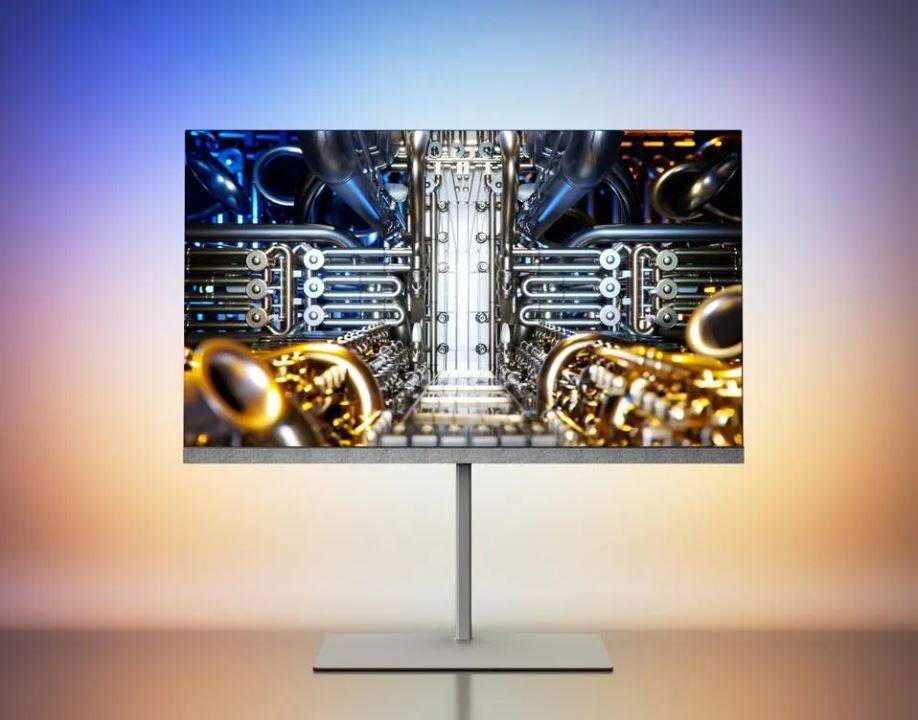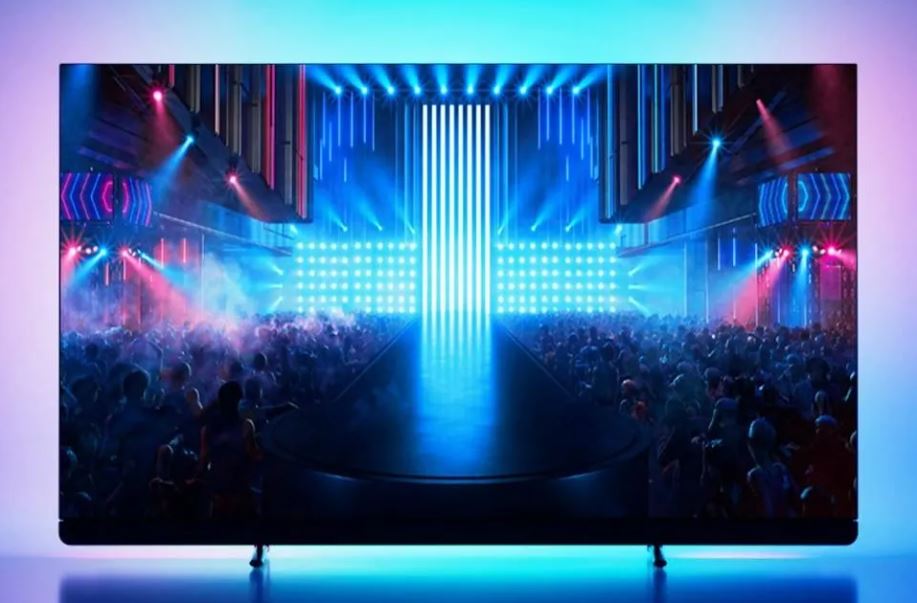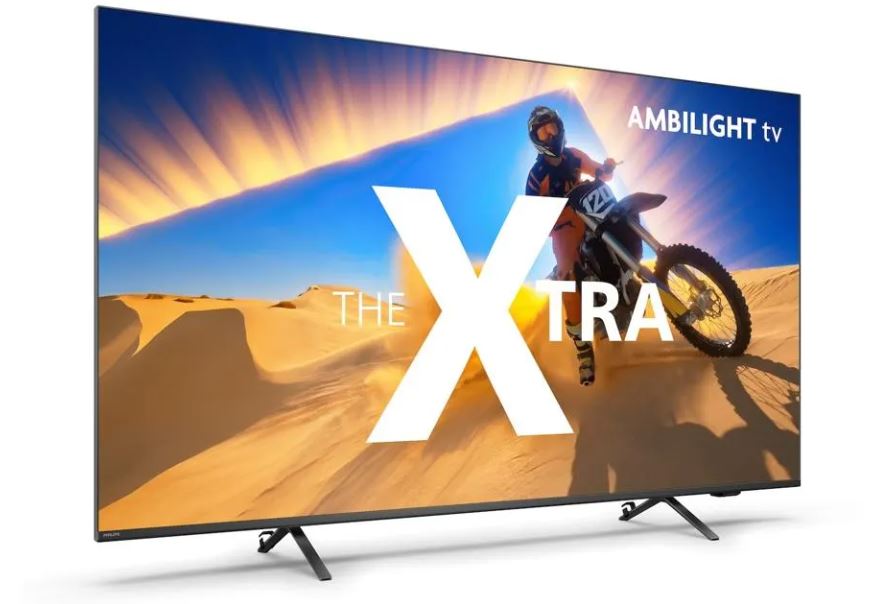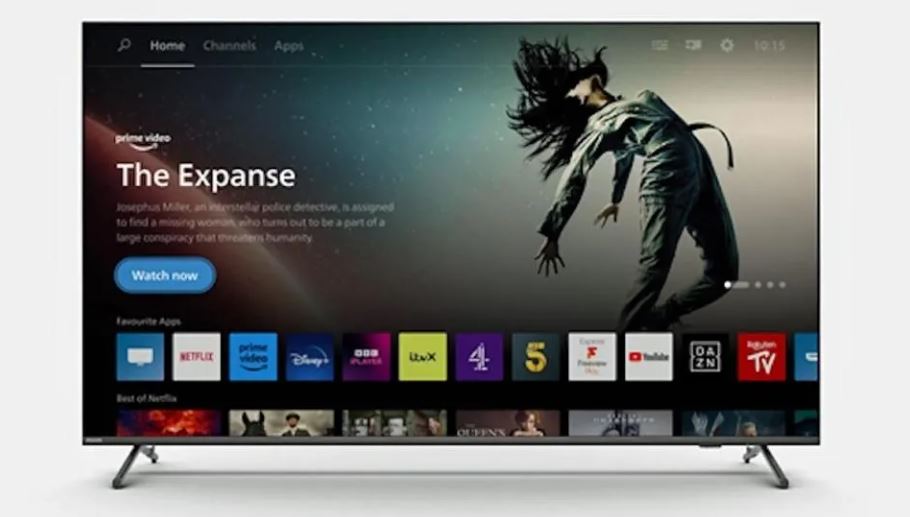Philips in Europe has today taken the wraps off a large chunk of its upcoming TV range for 2024, incorporating a promising mix of premium OLED and LED options.
Sitting at the top of Philips’ 2024 TV tree will be the new OLED+959. Available in a single 65-inch size, the OLED+959 will be built on what Philips (which is owned in Europe by TP Vision) calls Meta Technology 2.0, driven by a new two-chip, 8th generation of Philips P5 AI Dual Engine processor and accompanied by a potent 102W Bowers & Wilkins 5.1.2 audio system.
Looking at each of these new key features in turn, the second generation of Philips META technology combines two core elements: A Micro Lens Array OLED panel, and Philips’ META Multi Booster ‘algorithm’, devoted to getting the maximum value out of the extra brightness and contrast MLA makes possible. The panel uses the latest, second-gen MLA hardware, where new 3D MLA lens analysis equipment is able to optimise the angles and curvature of the MLA lenses to further improve their brightness-boosting capabilities.

The OLED+959 will be available in one 65-inch screen size, and will deliver a micro lens array screen as well as a 5.1.2 sound system designed with Bowers & Wilkins. PHOTO: PHILIPS
Coupled with a revamped version of the META Multi Booster algorithm, Philips claims that its META 2.0 technology is capable of briefly achieving remarkable 3000-nit brightness peaks on a 3% white HDR window.
The new 8th generation P5 AI Dual Engine processor carries all the previous precisely ordered processing steps focused on improving what Philips sees as the five key aspects of picture quality (colour, sharpness, motion, contrast and source detection), but also introduces a third take on Philips Ambient Intelligence system for optimising picture quality to suit your room conditions; a second version of Philips’ AI Machine Learning sharpness booster; and a third version of the brand’s Smart Bit Enhancement system for improving colour subtlety.
The latest Ambient Intelligence processor now includes optimisation of HDR to ambient light levels, while retaining ‘director intent’ in darker rooms. The latest AI Machine Sharpness system deploys new algorithms and the extra power provided by the OLED+959’s twin-chip processing system to make pictures look more detailed (something that seemed to be working incredibly well during demonstrations), while the latest Smart Bit Enhancement system upgrades 8-bit content to what Philips describes as ‘near 14-bit precision’.
The OLED+959 introduces good news for gamers, too. New gaming features include support for 144Hz refresh rates with variable refresh rates - a capability which extends to Dolby Vision gaming. There’s also a new improved look to the Game Bar menu you can call up when you’re playing a game source, and Philips has managed to drastically reduce the input lag associated with the MEMC option you can call in if you want a particular game to look smoother/less juddery, reducing lag from 200ms to just 40ms. Obviously input lag reduces further if you don’t used the MEMC feature.
As we’ve come to expect from Philips’ flagship TVs, meanwhile, the OLED+959 appears as interested in sound quality as it is pictures, thanks to a built-in 5.1.2-channel, 102W sound system designed with UK Hi-Fi brand Bowers & Wilkins.
This system includes dedicated front-firing left, centre and right speakers, left and right side-firing speakers and two up-firing Dolby Atmos drivers, all of which feature two 30 x 50mm mid-range drivers. Bass is provided by a 75mm subwoofer supported by two pairs of 45 x 65mm passive radiators, while a 19mm titanium dome tweeter is supported by one of B&W’s famous Nautilus tubes.
Despite its channel count and power, the OLED+959’s audio system is all housed within the set’s slender chassis, covered by a slate grey Kvadrat Audiomix cloth, rather than being placed in a semi-external ‘sound bar’ as we’ve seen with some of the OLED+959’s flagship predecessors.
New Ambilight system
This year marks the 20th anniversary of Philips’ Ambilight technology, an occasion which Philips has marked by greatly improving Ambilight’s sophistication on the OLED+959 by adding multiple extra lenses to each of the individual rear-mounted colour LEDs that make Ambilight possible. These extra lenses are claimed to enable Ambilight to create a more potent, larger ‘halo’ effect around the TV, as well as, intriguingly, being able to create up to four different halos at different depths to add an extra dimension to Ambilight’s immersive effects.
Philips says the OLED+959 will go on sale in Europe in the third quarter of 2024.
Stepping down from the flagship OLED+959 gets you to the OLED+909 series. This will include 55, 65 and 77-inch screen sizes, all of which, it seems, will continue to benefit from the new META 2.0 OLED panel and META Multi Booster algorithm carried by the OLED+959, as well as the new 8th-gen Gen P5 AI processor (though in a less powerful single-chip version that won’t deliver quite such far-reaching results as the dual AI processor).

The OLED+909 series will retain the MLA technology, but feature a less powerful audio system and switch to feet desktop mounting.
PHOTO: PHILIPS/TP VISION
The OLED+909s will retain the same gaming features as the OLED+959, including the 144HZ VRR support and new Game Bar, while its version of Ambilight will emanate from all four sides of the series’ screens.
The sound system steps down to a forward-firing 3.1-channel system - though this is still designed by Bowers & Wilkins, still delivers an impressive claimed 81W of power (including a 75mm subwoofer supported by four passive radiators) and manages to slim down the 30 x 50mm main drivers compared with previous generations without apparently compromising sound quality.
Finally, the OLED+909s ship with a pair of black sheen finish desktop feet in place of the OLED+959’s pole-style floor mount stand. Philips predicts that the OLED+909s will be available in Europe from June.
Below the OLED+909s will sit Philips’ new ‘mainstream’ OLED809s. Set to launch in Europe in May in 42, 48, 55, 64 and 77-inch screen sizes, the key change with these models is that while they’ll retain the new single-chip 8th Gen P5 AI processor, complete with the 8th Gen’s three major new features, they lose the META 2.0 tech with its micro lens array, reverting instead to a so-called OLED_EX panel. These are still substantially brighter than ‘basic’ OLED panels, though, with Philips stating a promising 1,300-nit brightness peak.
The 809s also drop down to a three-sided version of Ambilight, and don’t benefit from a forward-facing Bowers & Wilkins-designed audio system. That doesn’t mean the sound doesn’t still have the potential to be good, though, as Philips claims that the 809 series’ 2.1 system will be driven (with the exception of 50W for the 42-inch model) by a very healthy 70W of power, and delivered via two-way left and right speakers and a dedicated triple ring rear facing bass driver that’s supported by four passive radiators and a more accurate digital crossover.
The OLED809’s design will feature an ultra-thin black metal bezel and, for all models bar the 77-inch, a central, metal swivel stand finished in Satin Chrome. The 77-inch will sit on a pair of extruded metal ‘Pill’ feet instead.

The Philips PML9009 Xtra series will feature Mini LED lighting and 144Hz gaming support. PHOTO: PHILIPS
Switching over to Philips’ new LED TVs for 2024, sitting at the top will be the June-launched PML9009 mini LED series. Available in 55, 65, 75 and, for the first time for a Philips Mini-LED set, 85-inch sizes, the so-called ‘Xtra’ PM9009s continue to benefit from the latest P5 picture processor, this time applied to a 144Hz, wide colour gamut (covering a claimed 98% of the DCI colour spectrum) panel claimed to be capable of outputting 1000 nits of peak brightness. There’s no detail on potential local dimming zone numbers in Philips’ information on the PML9009 to date.
The PML9009 picture talents will be backed up by a three-sided version of Ambilight, and intriguingly the PML9009’s smart system will see Philips turning to a new Titan OS platform instead of the Google TV one found on all of the brand’s 2024 OLEDs.

The PML9009 will introduce a new Titan OS smart TV platform. PHOTO: PHILIPS
Titan OS is a European company that’s developed its own independent operating system with a view to enabling TV brands to build a more customised smart TV experience, and it claims to already carry “an extensive list of premium applications and channels on Philips branded TVs, including Disney+, Netflix, Prime Video, Youtube, Pluto TV, DAZN among many others.”
The PML9009s will feature narrow-bezel designs with a dark anthracite finish that will also be applied to their two metal-edged arch-rise feet.
Philips has done well in sales terms over the years with what it calls its ‘The One’ TV series; a mid-range LCD offering that the brand believes achieves a particularly sweet combination of price, performance and functionality. For 2024, it’s selected the PUS8909s to receive The One designation.
Available from May, the 43, 50, 55, 65 and 75-inch PUS8909s revert to ‘normal’-sized LEDs rather than Mini-LEDs, and while they’re still considered to be wide colour gamut TVs, no exact colour range promises are quoted, indicated that we’ll be looking at figures some way down on the 98% of DCI claimed for the PML9009s.
They do still get the latest P5 processor, though, as well as ongoing support for 144Hz gaming signals, a three-sided Ambilight implementation and (on all but the 75-inch model) a ‘delta’ style, centrally mounted swivel stand, with both the stand and the TVs frames being finished in anthracite grey.
TrendForce 2024 New Mini LED BLU Display Trend Analysis
Release Date: 31 October 2023
Language: Traditional Chinese / English
Format: PDF
Page: 153
If you would like to know more details , please contact:





 CN
TW
EN
CN
TW
EN





